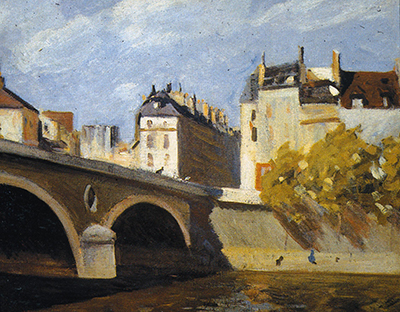Edward Hopper is best known for his oil paintings, and 'Bridge on the Seine' is a typical representation of a piece from his earlier career, when he was still experimenting with art and asking questions of both himself and the viewer through his choice of subject matter.
Although he grew up in New York, Hopper displayed a keen interest in French culture from a young age. This passion was largely influenced by his father, while his artistic side is credited as being inherited from his mother's lineage. If Hopper ever planned to pay tribute to his love of art and all things French in one painting, this could be it. 'Bridge on the Seine' can, in so many ways, be viewed as a representation of two keen interests given to him by either parent.
Hopper painted this work in 1909, when he was 27 years old. By this stage of his life he was working as a cover designer for trade magazines. He disliked the job and remained on a psychological even keel by taking relatively frequent trips away. In his late twenties he made three trips to the French capital, and this oil painting captures the main river in Paris flowing under a bridge on what appears to be a pleasant day weather-wise.
The sky is blue, the trees are full of leaves and there is a sense of warmth emanating from the piece, which could illustrate just how happy Hopper was during his visits to Paris. Bearing in mind that his key subject here is an iconic Parisian mainstay – the Seine – it is perhaps no surprise that the painting drips with calmness and a sense of comfort. Hopper felt at home here and he illustrates that point very clearly.
Throughout his career, he was not one for experimenting too broadly with symbolic representations of subject matters. For example, the Picasso-led cubist movement was largely lost on him. Hopper painted subjects and scenes as they appeared in front of him, and 'Bridge on the Seine' is fundamentally an honest representation of the scene that lay before his eyes.




